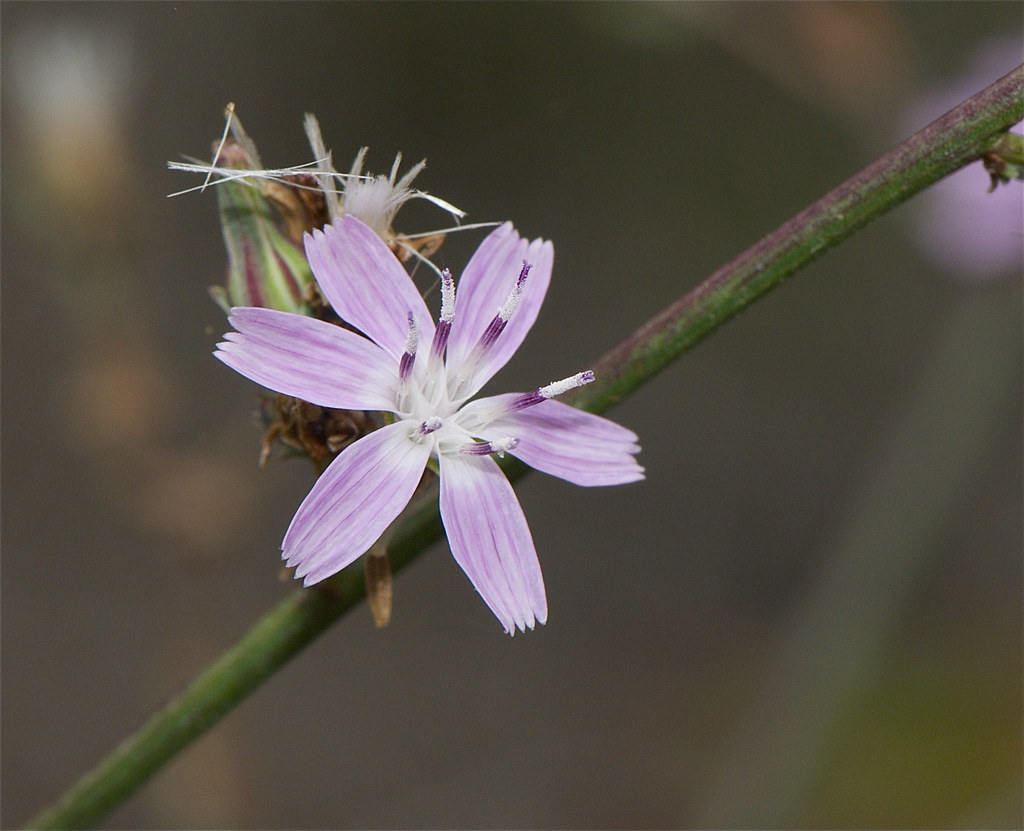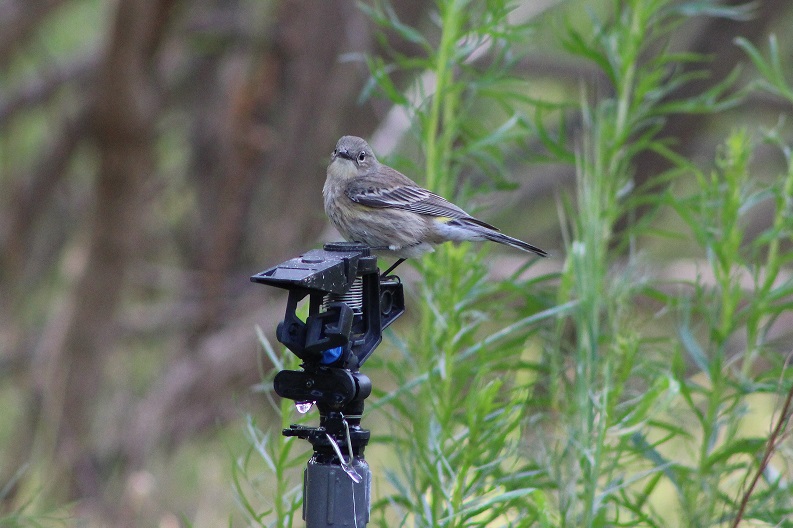With temperatures hitting 80 degrees this week in southern California, it might be hard to believe that we marked the first day of fall on September 22nd. While we might not see dramatic seasonal changes like the leaves changing color back east, there are many changes to see if you look closely! As the days begin to shorten, watch for late season flowers in bloom, including sand aster (Corethrogyne filaginifolia), clustered tarweed (Deinandra fasciculate) and twiggy wreath plant (Stephanomeria virgate). These plants offer important resources for local birds and other pollinators.

Twiggy wreath plant
One of our most exciting seasonal changes is the fall migration of birds into and out of Southern California. As we say goodbye to birds such as the Pacific-slope Flycatcher and Wilson’s Warbler, we are able to say hello once again to the Yellow-rumped Warbler and Hermit Thrush.

Yellow-rumped Warbler
The Northern Arctic Tern, which travels up to 24,000 miles a year, holds the record for the longest migration path of any migratory bird. As you can imagine, it takes a lot of energy for a bird to travel such a long distance. You may be asking yourself, why not stay in one place like most of us humans do? The simplest answer is that birds leave one area when the resources that they rely on become less abundant and move to another area where resources are more abundant. Birds depend heavily on the plant community where they make their home to provide them with shelter, food and places to nest. Without these resources, birds are unable to thrive.
Whether you are out on the trail hiking, taking a bike ride, or volunteering at one of our stewardship events, it’s always a good time to look for birds! Keep your eye out for some of these fall migrants:
- Sharp-shinned Hawk
- Dark-eyed Junco
- Hermit Thrush
- Ruby-crowned Kinglet
- Townsend’s Warbler
- White-crowned Sparrow
Join our next birding walk in Laguna Coast Wilderness Park on Sunday, October 29th and benefit from our volunteer naturalists’ expertise as they point out and identify both local and migratory birds!